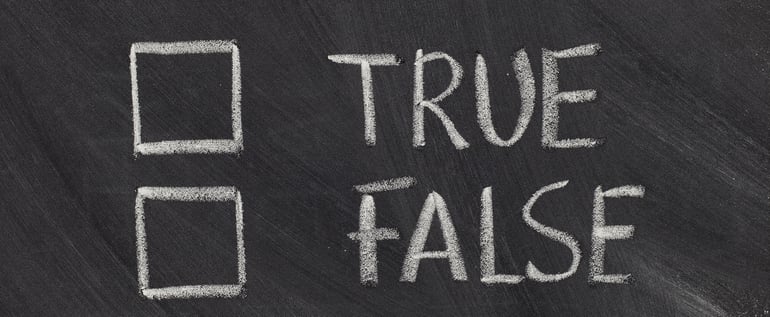
One of the demands of democracy is the ability to productively engage with others who see things differently—to debate ideas, learn from one another, and advocate for thoughtful and informed decisions. Productive engagement of this kind requires us to think critically and to try to discern fact from opinion, hypothesis from truth. This last part has felt especially complicated over the last several months.
So what does this mean for educators? How do we prepare students to productively engage in our increasingly complex reality of “unsubstantiated claims,” “fake news,” and “alternative facts?”
The answer, I believe, is not to tell students what to think, but rather to show them how to think. Students need a robust and sophisticated understanding of what it means to be a critical thinker, and what concepts like argument and truth mean in practice.
To explore all this, I reached out to a mathematician, a lawyer, a scientist, and a historian—all with an orientation towards education—and asked: What constitutes a truth or a fact within your discipline? What constitutes critical thinking? What makes an argument strong?
Mathematics: Absolute Proof
According to John Benson, an award-winning longtime mathematics educator based in Illinois, “Mathematics is the only place where there is absolute proof that something is true.” In mathematics, everyone must first agree to certain assumptions within the system. Since we all start with the same assumptions and follow the same rules, inferences don't need to be drawn—no leaps in logic need to be made. Agreeing or disagreeing with a math proof is about determining if the proof broke any of the well-defined rules. As Benson claims, “The only way one can doubt a theorem is to find fault with its proof.”
Law: Standards of Proof
Truth can be elusive in the field of law, according to James Ryan, dean of the Harvard Graduate School of Education and former law professor at the University of Virginia. Ryan points out that depending on the case, there are different “standards of proof,” including a preponderance of evidence, clear and convincing, or guilt beyond a reasonable doubt. Unlike in mathematics, where arguments are correct or incorrect, arguments in law must be scrutinized with critical thinking. According to Ryan, “Critical thinking is the ability to identify the strengths and weaknesses in arguments and to be able to decide which argument—though not perfect—is stronger and truer to the law and the facts.” Because the standard of proof is established at the onset, everyone knows the bar that must be met for an argument to be successful.
Science: Connecting an Argument with Evidence
The basis for strong arguments in science is data. According to Nicholas McConnell, an astrophysicist and a member of the University of California, Santa Cruz Institute for Scientist & Engineer Educators, “Scientific work is grounded by the principle that tangible measurements—‘observations’ or ‘data’—hold ultimate sway. A theory can only stand as long as data support it.” Similar to arguments in law, but unlike those in mathematics, scientific arguments may not need to be perfect for them to be successful. What’s more important is clearly communicating the relationship between an argument and the evidence. “The ideal standard for science is not unwavering accuracy,” McConnell explains, “but rather transparency in how information is acquired and completeness in describing the reasoning that links one piece of information to another.”
History: Exploring the Who, What, and Why
Science is not the only discipline that is preoccupied by data. Data matters in history, but it’s also important to know who gathered it, how, and why. Sam Wineburg, history professor and director of the Stanford History Education Group, writes extensively about historical thinking. “The first thing that historical study teaches us is that there is no such thing as free-floating information. Information comes from somewhere,” he argues in “Why Historical Thinking is Not About History.” As in science, critical thinking in history requires an analysis of the source of information. But in science, where robust measurements can be replicated, that analysis focuses on the tools and processes through which measurements were collected. In history, Wineburg explains, “We teach students how to evaluate sources by asking questions about the author and the context, and by raising questions about other supporting evidence.”
Truth in the Classroom
What I learned from this exploration is that mathematicians, lawyers, scientists, and historians all pursue truth and make arguments in their own way. While these differences can make truth seem like a moving target, they should not be seen as an excuse for sloppy thinking. Within each field, there are standards and norms that attempt to outline the rules of the game. As educators, we have the opportunity to help students develop a more sophisticated understanding of truth by exploring how these norms are created and reinforced.
Empowered by an interdisciplinary understanding of truth, students can become critical consumers of the arguments they hear—and then construct their own arguments with greater skill and intention. Upon hearing claims, even from an authority like the president of the United States, students can ask: What understanding of truth and critical thinking is embedded in this argument? In which discipline would this argument be considered strong? Am I convinced, or do I need to learn more?
Want to explore other elements of what makes a healthy democracy? Visit our "What Makes Democracy Work?" page to discover lessons and hear from historians, legal and political scholars, and voices from literature and history. And make sure to join the conversation using the hashtag, #DemocracyAndUs!
This post was originally published on Usable Knowledge, an online resource from the Harvard Graduate School of Education that aims to make education research and best practices accessible to educators, policymakers, members of the media, nonprofit leaders, entrepreneurs, and parents.


